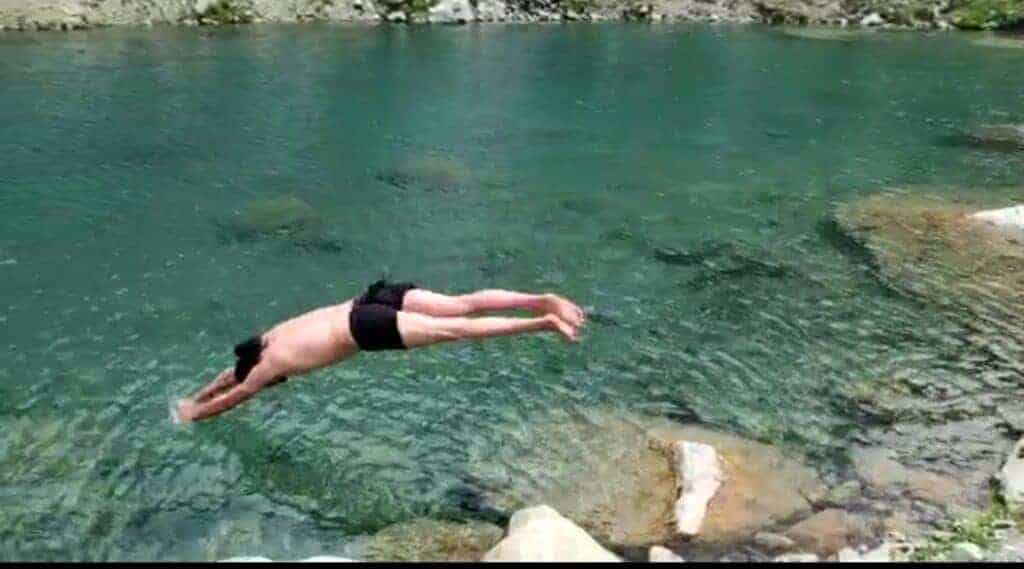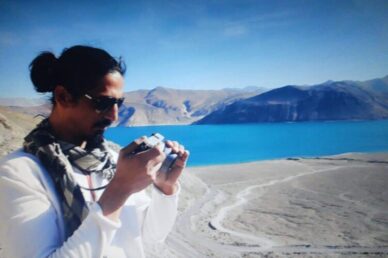Swimming for me is a skill that enables you to survive in water without the support of any equipment by using body parts i.e. your arms and legs to move through the water. So for me Swimming is a Life Skill which over the course of history has gained the importance of a well-established sports discipline as well.
Swimming as a Life Skill
There is no denying that people who live in coastal areas, near rivers or any other water bodies or who encounter water in life-threatening way will understand the fact that without this skill of swimming life is incomplete and always endangered.
This skill not only enables their survival but also makes the disaster management workforce in case of any water-born eventuality. This becomes the first response team and plays a vital role in any kind of rescue operations carried out by designated professional.
In recent years we have seen great floods in the states of Jammu & Kashmir & Kerala where people with swimming skills played major role in rescue and relief operations. These people turned out to be heroes who acted as saviors of the stranded people and reduced the loss of human lives in such travesties.


Now that swimming has achieved great importance in the field of physical fitness, sports & adventure directly and indirectly. Let me walk you through some other important aspects of swimming which are of sports & commercial significance:
Origin: Archaeological and other evidence shows swimming to have been practiced as early as 2500 BC in Egypt and thereafter in Assyrian, Greek, and Roman civilizations. In Greece and Rome swimming was a part of martial training and was, with the alphabet, also part of elementary education for males.
Types: Generally there are four types of swimming strokes or styles:
1. Freestyle: Also known as the front crawl, this is the classic swimming posture. Lie on your stomach and flutter your legs while alternating the arms in a windmill motion. You propel yourself forward with the moderate speed in a specific direction. The freestyle is a great competitive and exercise stroke and allows you to swim longer distances without exhaustion.
2. Backstroke: Lie on your back and flutter your legs while circling your arms in a windmill motion. It’s very similar to the freestyle, but you swim on your back and propel yourself backward. Many doctors recommend this technique to those who have back problem, or to develop stronger back muscle. This can be a more difficult stroke, though, so consider getting private swim lessons to learn the proper technique here.
3. Breaststroke: Float with your stomach facing down, then move your arms in a half-circle motion in front of the body. Bend your legs, then kick back with good timing, and you’ll propel yourself up and forward. This is a great workout and is recommended for those who swim for exercise.
4. Butterfly: An excellent workout and common competitive stroke–possibly because it tests a mature swimmer–the butterfly is performed by bringing your arms up above your head, then pushing them down into the water to propel yourself forward. Your legs perform a dolphin kick, in which they stay together and kick simultaneously in a bobbing fashion. This is a very difficult stroke to learn, but if you take swimming classes in private, you can work diligently to learn this challenging stroke. A swimming teacher will help you learn proper technique and guide you until you perfect it.
Survival or Side Stroke: Although not one of the official four strokes in competitive swimming, the sidestroke is a great survival technique. This is commonly used by lifeguards because you can hold onto another person and keep them above water while you swim. Lie on your side and scissor your legs to propel yourself forward. It’s a great leg work out because your legs do most of the propulsion. Alternate by meeting your hands in front of your chest, then darting your arms outward, one back and one forward. This can be challenging to learn, but most important for helping others.
Swimming as a Sport: Swimming is an individual & team water racing sport; competitive swimming is one of the most popular Olympic Sports, with multiple distance events in freestyle, butterfly, and backstroke & breaststroke individual medley.
Some of the major competitive swimming events are classified under the following categories;
• Freestyle: 50m, 100m, 200m, 400m, 800m and 1500m.
• Backstroke: 100m and 200m.
• Breaststroke: 100m and 200m.
• Butterfly: 100m and 200m.
• Medley: 200m and 400m.
• Freestyle relay: 4 x 100m, 4 x 200m.
• Medley relay: 4 x 100m (men, women, mixed)
• Open water: 10km.
Related Sports and Career Opportunities
Besides being an important life swimming is a bright career option now like athletes, coaches, support staff, lifeguards, divers & with the advent of technology employing advanced sports gadgets, cameras, boats it has widened the horizons in terms of professions like different kinds of fishing, photography, adventure & leisure.
A. In the water
- Aquajogging, is a cross-training and rehabilitation method using low impact resistance training. It is a way to train without impacting joints. Participants wear a flotation device and move in a running motion in the deep end of a pool. Equipment, aside from a pool, can include a flotation belt and weights.
- Artistic or Synchronized swimming consists of swimmers performing a synchronized routine of elaborate moves in the water, accompanied by music.
- Diving, the sport of jumping off springboards or platforms into the water
- Fin swimming is a sport similar to traditional swimming using fins, mono-fin, snorkel and other specific devices
- Modern pentathlon includes épée fencing, pistol shooting, swimming, a show jumping course on horseback, and cross country running
- Rescue swimming is swimming with the goal to rescue other swimmers
- Swimming, including pool swimming and open water swimming
- Synchronized diving, Two divers form a team and perform dives simultaneously. The dives are identical.
- Triathlon, a multi-sport event involving the completion of three continuous and sequential endurance events, usually a combination of swimming, cycling and running
- Water aerobics is aerobics in the water.
- Water basketball, mixes the rules of basketball and water polo, played in a swimming pool. Teams of five players each must shoot at the goal with a ball within a certain time after gaining possession.
- Water polo is a sport of two teams played in the water with a ball.
- Water volleyball
B. On the water
- Barefoot running, running on the beach without shoes
- Boat racing, the use of powerboats to participate in races
- Boating, the use of boats for personal recreation
- Cable skiing, similar to wakeboarding but with cables for artificial maneuvering
- Canoe polo combines boating and ball-handling skills with a contact team game, where tactics and positional play are as important as the speed and fitness of the individual athletes.
- Canoeing is an activity which involves paddling a canoe with a single-bladed paddle. Most present-day canoeing is done as or as a part of a sport or recreational activity.
- Dragon boat racing, teams of 20 paddlers racing the ancient dragon boat
- Fishing, the recreation and sport of catching fish
- Flyboard, a brand of the hydro-flighting device which supplies propulsion to drive the Fly-board into the air to perform a sport known as hydro-flying.
- Jet Skiing, performed with a recreational watercraft that the rider sits or stands on, rather than sits inside of, as in a boat.
- Kayaking, the use of a kayak for moving across water
- Kiteboating, the act of using a kite rig as a power source to propel a boat
- Kneeboarding, an aquatic sport where the participant is towed on a buoyant, convex, and hydro-dynamically shaped board at planing speed, most often behind a motorboat.
- Parasailing, where a person is towed behind a vehicle (usually a boat) while attached to a parachute
- Picigin, a traditional Croatian ball game that is played on the beach. It is an amateur sport played in shallow water, consisting of players keeping a small ball from touching the water.
- Rafting, recreational outdoor activities which use an inflatable raft to navigate a river or other body of water
- River trekking, a combination of trekking and climbing and sometimes swimming along the river
- Rowing, a sport that involves propelling a boat (racing shell) on water, using oars
- Sailing, the practice of navigating a sail-powered craft on water, ice, or land
- Sit-down hydrofoiling is riding on the water with a hydrofoil attached to a ski.
- White water rafting, rafting on various classes of river rapids
- Yachting, the use of recreational boats and ships called yachts, for racing or cruising
C. Under Water Sports
- Aquathlon (underwater wrestling)
- Finswimming, some events are practiced completely underwater
- Free-diving
- Snorkeling is the practice of swimming at the surface (typically of the sea) being equipped with a mask, fins, and a short tube called a snorkel. Snorkeling is a fun and exciting way to discover the Ocean.
- Spearfishing
- Sport diving (sport)
- Underwater football
- Underwater hockey is a game played underwater which has some similarities to hockey. Two teams of players use short wooden curved sticks to move a heavy puck across the pool bottom to the opponents’ goal.
- Underwater ice hockey
- Underwater orienteering
- Underwater photography (sport)
- Underwater rugby is a game played underwater which has some similarities to rugby football. Two teams try to score goals by sending a slightly negatively buoyant ball into the opponents’ goal placed on the bottom of the pool.
- Underwater target shooting
- Outdoor recreation
- Outline of canoeing and kayaking
Recreational Diving
- Cave diving , Deep diving, Freediving, Ice diving, Mermaiding, Spearfishing
- Underwater archaeology, particularly activity involving wreck diving
- Underwater photography, including underwater videography, is photography done underwater. Numerous contests worldwide are arranged every year. Digital cameras have revolutionized how many divers participate.
Health Benefits
Swimming as we all know is considered as one of the toughest sports that’s played personally as well as professionally and like other sports it comes with multiple health benefits both physiological as well as psychological. Swimming is a great workout because you need to move your whole body against the resistance of the water.
Swimming is a good all-round activity because it:
- keeps your heart rate up but takes some of the impact stress off your body
- builds endurance, muscle strength and cardiovascular fitness
- helps maintain a healthy weight, healthy heart and lungs
- tones muscles and builds strength
- provides an all-over body workout, as nearly all of your muscles are used during swimming.
- being a relaxing and peaceful form of exercise
- alleviating stress
- improving coordination, balance and posture
- improving flexibility
- providing good low-impact therapy for some injuries and conditions
- providing a pleasant way to cool down on a hot day
- being available in many places – you can swim in swimming pools, beaches, lakes, dams and rivers. Make sure that the environment you choose to swim in is safe.
How to Learn Swimming
Naturally, all mammals have the capability to swim but it is humans who drown most due to fear, lack of practice & inability to enact this inborn capability. Therefore for humans, the best way to learn swimming is to take sessions from any good swimmer in still & shallow water not more than 3/4th of their height with life waist on to overcome the fear of drowning and enact this inborn trait. And for competitive swimming, you can use the services of experts to improve your skill and technique.
About Author

Saleem Lone is a Social Entrepreneur, Change Management Professional at Wyath Services Private Limited & an Adventure Sportsperson.
He is a trained swimmer and had crossed world famous Dal Lake of Srinagar, Jammu & Kashmir at a young age of 10 years in junior & sub-junior category with a distance of 1 Km & 1.8 Km respectively. He has learned swimming as a life skill and applied it in the 2014 mega-floods of Kashmir Valley and evacuated more than 30 families to safe places in 3 days by using a makeshift raft of Solid Thermal Foam insulation Packing Material. He loves adventure sports, treks to high altitude lakes and swims there in freezing cold waters.






